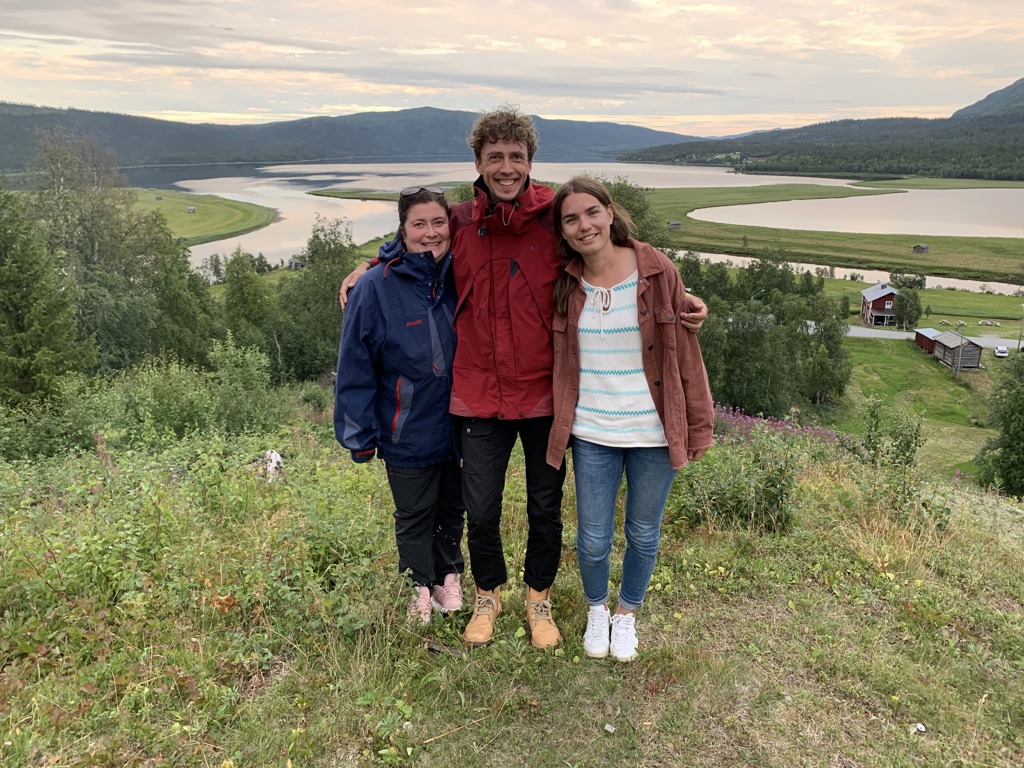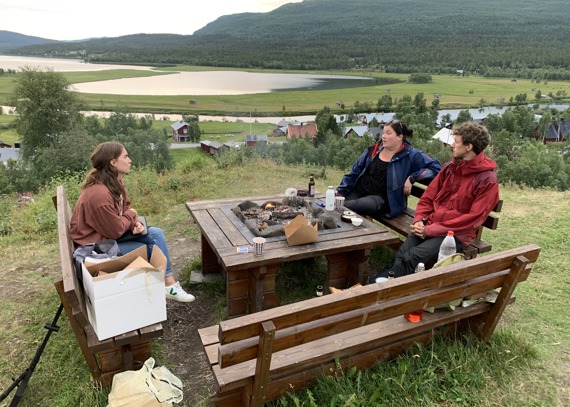
Young generation see their future in Ammarnäs
Ammarnäs is a growing hive of activity, even though winter is soon upon us. Three of the people responsible for this increasing activity are Sofia Johansson, 27, Simon Grundström, 28, and Moa Olsson, 25. All three have moved to Ammarnäs the past few years – and have no plans to move away again.
“Everything is so beautiful here,” says Sofia convincingly, and Moa interjects:
“We have an amazing quality of life.”
These words are spoken by two of several young adults who over the past few years have either returned to Ammarnäs or moved to their partner’s home town. And the words ring with pride and conviction that they’ve made the right life choice.
“Telling my colleagues that I was moving back to my home village was a little difficult. The norm still feels like you should work full-time, advance your career and live in the city with all that it has to offer,” Sofia explains.
Sofia was born in Ammarnäs but moved to attend secondary school, after which Åre and then Örnsköldsvik followed for studies. At the age of 25, the desire to slow things down, to live more and work less, became so great that she headed back home. Today, she enjoys the freedom and nature and works as a temporary worker wherever needed. She considers herself multitalented.

Moa and her partner Jon-Anders have lived in Ammarnäs for almost three years. When their daughter was a newborn, they decided to move to Jon-Anders’ home town. Prior to the move, they’d commuted to Ammarnäs as often as they could, on days off and weekends. The move made everything much easier.
Simon’s journey back to Ammarnäs is similar to Sofia’s – and Moa’s. After studying and working in Umeå, the longing for nature, babbling brooks, dark spruce forests and high mountains became too much to resist. And then there was this thing about commuting.
“I’ve driven home from Umeå many weekends, so it’s just great that I can live here again,” says a relieved Simon.
Bright future
“Naturally, we’ve heard about how Ammarnäs flourished in the 1980s. Now we think it’s time again,” Moa laughs.
And sure, modern-day Ammarnäs can feel far removed from the vibrant rural community they’ve heard about. Today, the village has about one hundred permanent residents. And there are plenty of challenges – the housing shortage being one of them. They describe how more people want to move to Ammarnäs but are often derailed by the lack of houses and apartments. Few job opportunities are another challenge. Within the public sector, schools and care services are the biggest employers, but that’s still only just about ten people. Tourism has openings, but mostly for seasonal jobs only. Sorsele offers better job opportunities, but then you have to be prepared to commute ninety kilometres each way.
Such challenges could cause anyone to throw in the towel and leave. But that’s not an option for Moa, Simon and Sofia. On the contrary, they’re determined to make their voices heard and have an active and positive dialogue with the municipality’s representatives. This increases their chances of continuing to live their dreams for many years to come, they say.
“This past spring, we contacted the municipal manager and invited him here. We had a few things we wanted to talk to him about. The meeting went really well, and we’ll soon be meeting again. We had opinions on the municipality’s new resident policy, which we feel should apply to the entire municipality and not just Sorsele town. We also think that certain administrative roles could be done from here. It worked well during the coronavirus pandemic for people to work from home. And look at what Storuman municipality has done in Tärnaby, where there’s a municipal office. We could have one as well.”
They put forward their ideas convincingly, with a clear picture in their minds. Anything is possible as long as you want it to be.
Still here in ten years
So, how will things be in ten years? Will you still live here? And what will have happened in Ammarnäs?
“I think the future looks bright,” says Simon. “There’s a lot being built in the village, and there’s increasingly more tourism. Tourism offers great opportunities for development and new approaches. And today, everything is possible as long as it can be sent by post! Otherwise, distance is one of the obvious challenges.”
“In ten years, we’ll have more residents throughout the municipality. And in Ammarnäs, the housing problem will have been solved and there’ll be jobs. I will have built a house and be self-employed – and perhaps a local politician,” says Moa a little cautiously, then laughs.
“Yes, I’ll still live here, and I will have bought a house and be some sort of entrepreneur. I want to contribute and give something back to my home community after everything it’s given me. And, of course, I’ll still have the chickens,” says Sofia, looking at Moa and laughing.
“Yeah, that’d be good,” says Moa, and adds longingly:
“And I have a half-dream that there’ll be a football team here...”